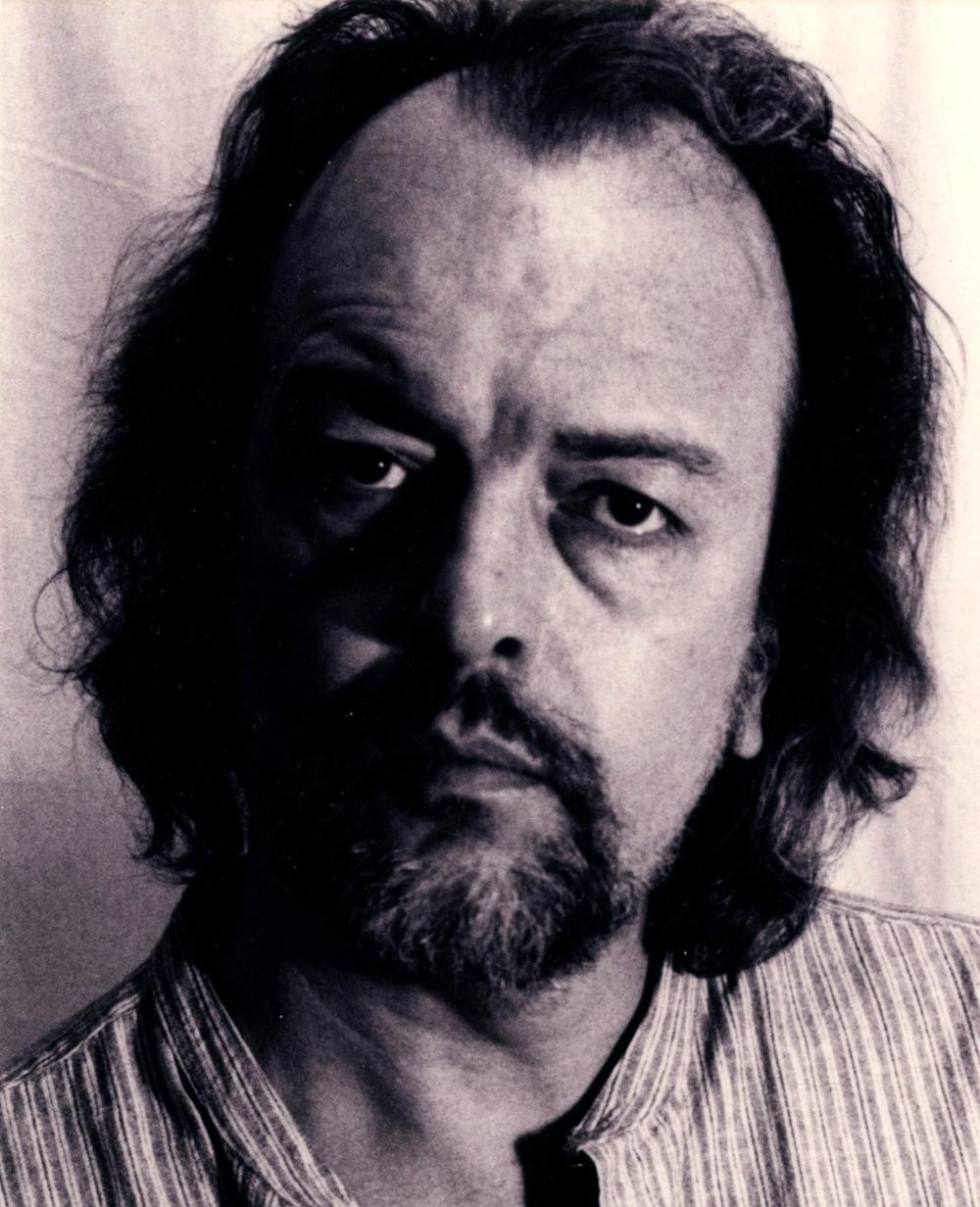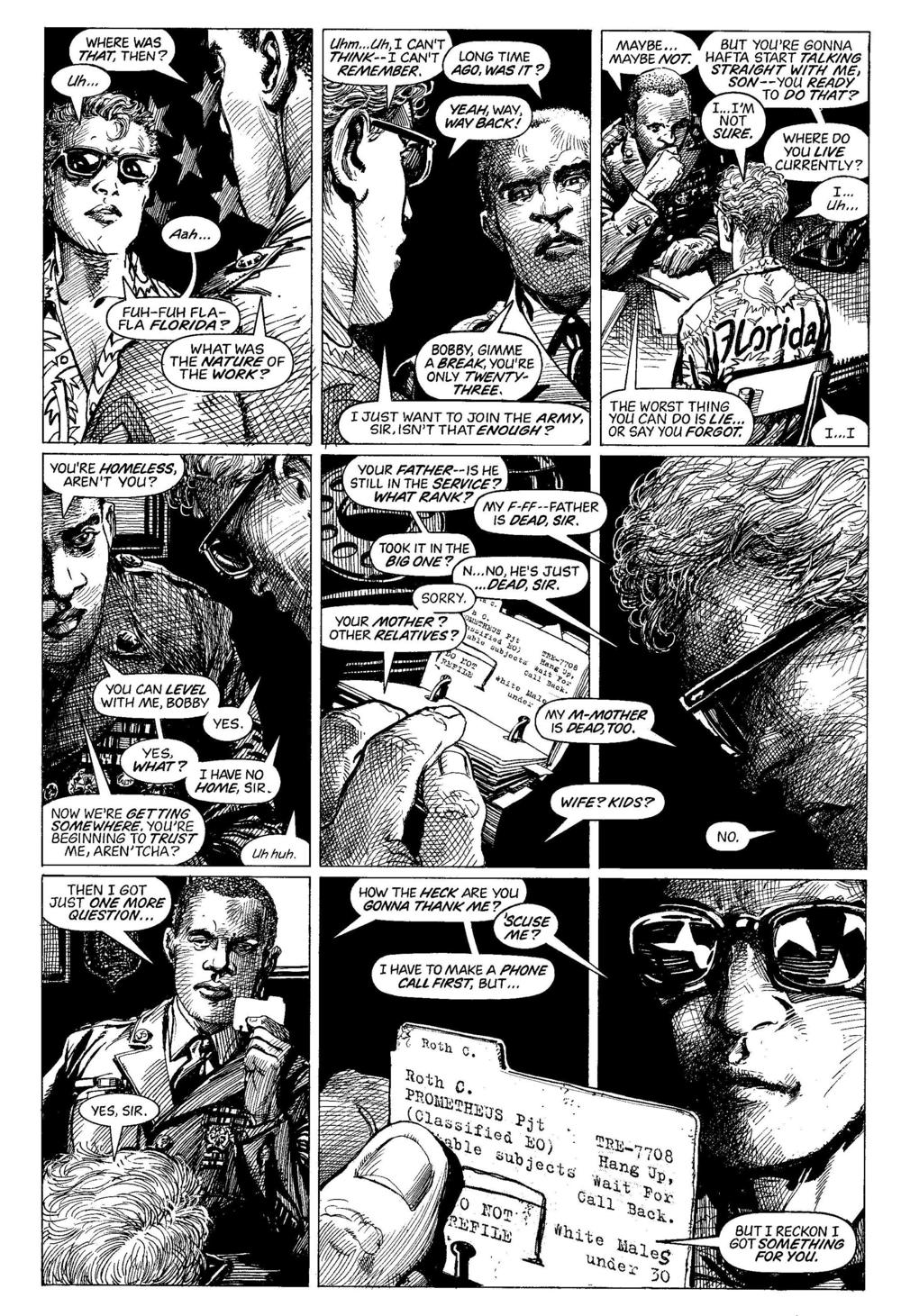Section Branding
Header Content
Comics Hero Barry Windsor-Smith Is Back, And He's Brought Something Monstrous
Primary Content
Maybe you grew up reading his Conan the Barbarian comics and thrilled to the vigorous lines of his X-Men titles over the years. Maybe you were delighted by his dreamy, intricate fantasy paintings in the '70s or discovered his work in the Opus retrospective volumes of 1999-2000.
But even if you didn't do any of these things, you should still take a minute to see what Barry Windsor-Smith — Eisner Award Hall-of-Famer, genre-shaping fantasy artist and 50-year veteran of the comics industry — has been up to for the last three-and-a-half decades.
Ever since the '80s he's been drawing, redrawing and refining one graphic novel, and he's finally releasing it into the world. The 365-page Monsters is a harrowing tale of a man who's subjected to a secret government experiment that transforms him into something terrifying. Windsor-Smith uses this vast canvas to explore wide-ranging questions about the nature of humanity and the scope of individual responsibility. I reached out to him via email to get his opinions on comics, art and his magnum opus.
When I was doing research for this interview, every article I read mentioned Conan the Barbarian in the first paragraph. I even found an NPR story from 2008 about how Conan was one of President Obama's favorite comic books when he was growing up. How does it feel to have created something that lives so vividly in people's hearts after so many decades?
It's very gratifying. Each generation has its own preferences and special favorites. Conan was from the 1970s. There are fans who remember other works of mine from different periods. My creation of Weapon X is from a little more than 20 years ago, yet I still receive fan mail telling me how important the story was to them.
Weapon X seems thematically similar to Monsters, in that Wolverine, like Monsters' Bobby Bailey, is dehumanized by a bunch of scientists who see him only as a subject. Why do you think you're drawn to this scenario? Do you worry about how scientific arrogance affects society?
No, I'm not that socially conscious. The fact is that I was writing Monsters during the same period I was creating Weapon X. It often happens that ideas or imagery from one project might migrate into another. Both the Professor and Oskar Friedrich had their left hand cut off, for example. Miss Hines and Janet Bailey are both strong but otherwise beleaguered women who only mean the best but are hard done by.
Comics — both the medium and the industry — has changed a lot since you drew Conan in the early '70s. Do you think there's more or less room for creativity and innovation today than there was back when you got started?
In the 1970s there were just two big companies producing comic books. Marvel and DC were pretty much the only game in town if you wanted to make a living at comic books. These days, though, there are dozens and dozens of small-press publishers who have links to the major distributors. [Artists] can flourish creatively without needing to sign the restrictive contracts foisted upon young talent by Marvel and DC.
You got the idea for Monsters 35 years ago. Is the final book significantly different from your initial vision?
I worked on Monsters for many years, and I rewrote and redrew it countless times. I created characters that were strongly defined whose personalities began to take over the story. I had to have faith that their wishes and desires were the key to creating a good story. The central "monster" is the least developed of the cast; he doesn't speak, for example. It's the people that surround him that drive the continuity.
That silent yet pivotal figure is Bobby Bailey, a mentally damaged young man who's subjected to a government experiment that horrifically disfigures him. How did you decide that he wouldn't speak after the procedure? Did your conception of his character evolve over the years?
The Monster was never fully verbal. At first, I had him grunting in response to others. The grunts stayed in the [speech] balloons on the artwork for many years, and I grew increasingly uncomfortable with the comic-booky-ness of it all. Due to the ever-lengthening time in production, the original art paper turned a dingy yellow and the glue holding the balloons and captions atrophied to the point where all the paste-ups fell off hundreds and hundreds of pages. Not much good came of this except my noticing that, with the "grunt" balloon [having] fallen to the floor, a panel of the Monster that I [had] never [found convincing] looked just fine as a silent shot.
Your dense, detailed style in Monsters is quite different from most comic art, which is usually much more minimalistic. Some writers have argued that it's the nature of comics to boil everything down to as few lines as possible. Is your style a deliberate rebuttal of this idea?
I hardly care what comics theorists think. I've drawn stories in the simplest of fashions; just plain and simple outlines that suggest reality rather than define it. I've created stories with high detail like a Pre-Raphaelite painting. Boiling comics down to simplicity is fine if you are producing a simple narrative. Monsters is realistic and complex and is therefore rendered that way.
Etelka Lehoczky has written about books for The Atlantic, The Los Angeles Review of Books and The New York Times. She tweets at @EtelkaL.
Copyright 2021 NPR. To see more, visit https://www.npr.org.
Bottom Content






